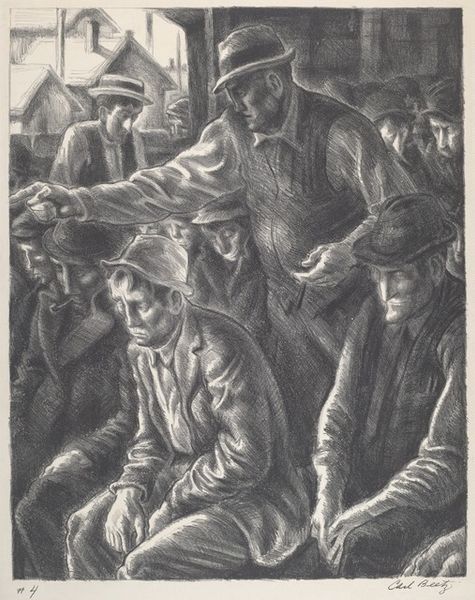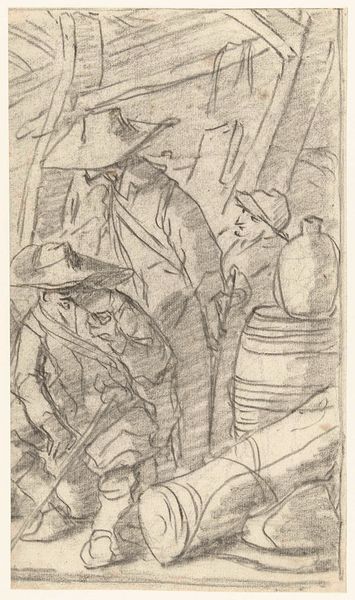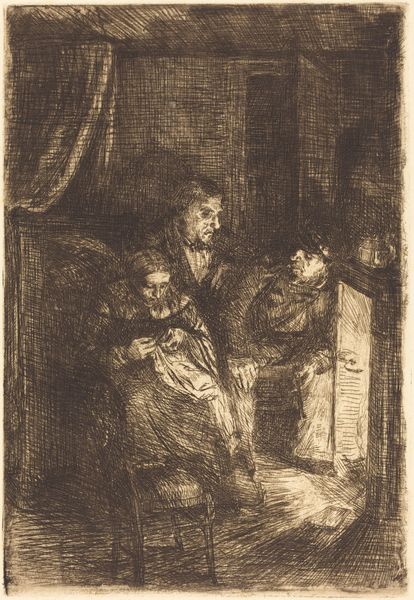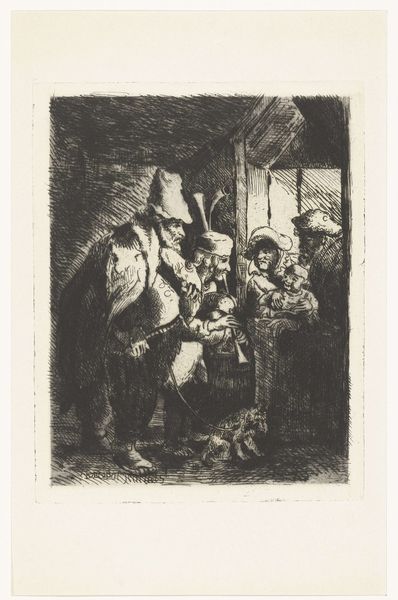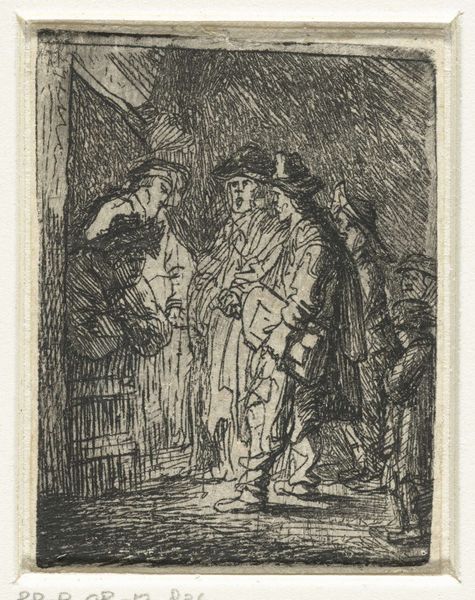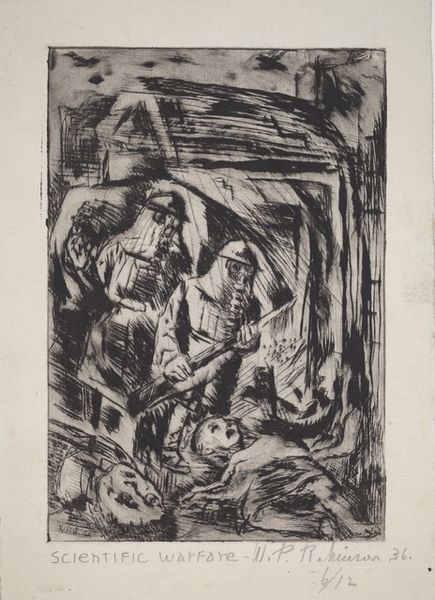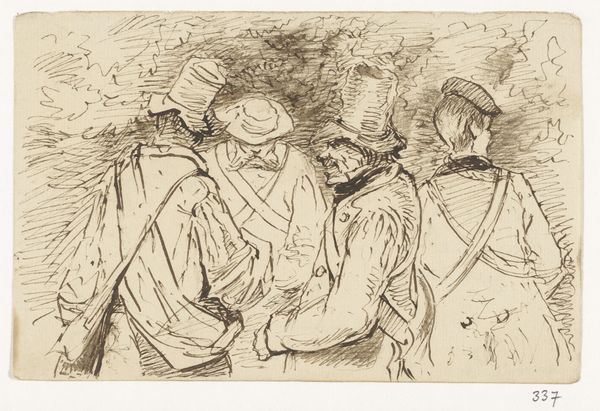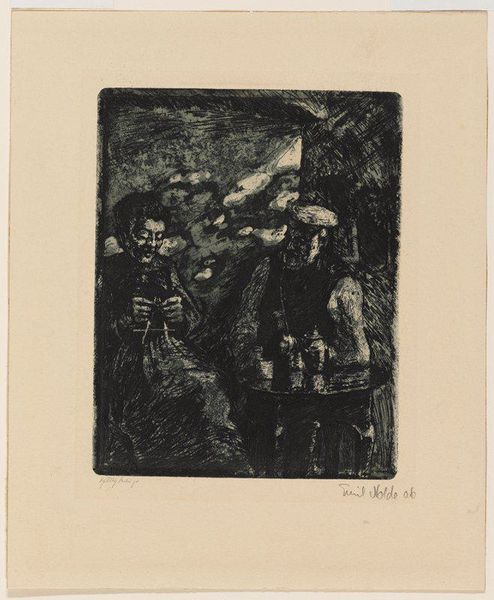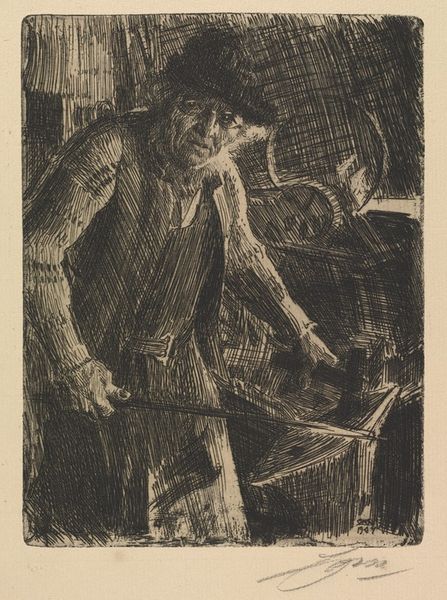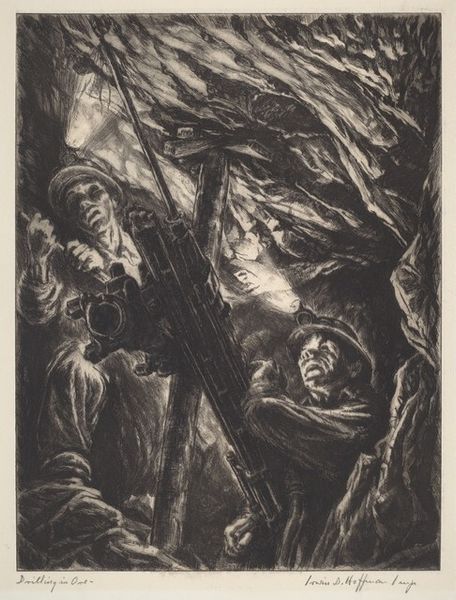
drawing, print, etching, charcoal
#
portrait
#
drawing
#
baroque
# print
#
etching
#
charcoal drawing
#
group-portraits
#
genre-painting
#
charcoal
Dimensions: height 225 mm, width 186 mm
Copyright: Rijks Museum: Open Domain
Editor: Here we have Jacob Hoolaart's "A Lyre Player and a Violin Player," an etching dating sometime between 1723 and 1789. It's a very dark, almost gloomy scene, but the tight grouping of the figures gives it an intimate feel. What stands out to you when you look at this piece? Curator: I'm struck by the artist's manipulation of light and shadow to create depth and volume. Notice how the diagonal lines of the etching emphasize the forms, defining the musicians’ clothing and facial features. The contrast pulls your eye forward, emphasizing the characters' expressive features and how they engage with the viewer, beckoning with musical charm. How does the artist leverage tonality to capture the subtle emotional interplay between the three figures? Editor: The figures are certainly compelling, and the tonal range makes sense considering the etching. It feels like a study of texture more than a presentation of pure form; the lines are rough, adding to the intimate mood. Is there something specific about their relationship that intrigues you? Curator: It's in how the subjects command the frame—there's a careful positioning that subtly emphasizes a focal point within their grouping. See how their collective gaze holds an audience captive? How can we not appreciate such detail which serves not only artistic structure, but also to connect us through semiotic engagement with early performance traditions? Editor: I see what you mean now. I hadn't considered the gaze quite like that! Curator: The artist, then, skillfully merges both the performance’s mood and precise structural arrangement in "A Lyre Player and a Violin Player," and has done so elegantly, has he not? Editor: Indeed. Examining these formal qualities has enriched my perception, underscoring just how intentionally crafted Hoolaart’s scene truly is!
Comments
No comments
Be the first to comment and join the conversation on the ultimate creative platform.

